Ethiopia is one of those places that lingers in your heart long after you've left. This East African nation is famed for many reasons. From its legendary historical milestones to the ever-vibrant cultures of its people, Ethiopia offers a fascinating blend of the old and the new.
One aspect that makes Ethiopia truly unique is its unmatched historical significance. Ethiopia is home to some of the oldest human artifacts, including the remains of 'Lucy,' one of the oldest hominids ever discovered. The country also boasts ancient churches carved into rock and centuries-old manuscripts that recount tales from millennia past.
When it comes to cultural diversity, Ethiopia turns this into an art form. With over 80 ethnic groups and as many languages, the country is a living tapestry of traditions, music, and dance. The annual Timkat festival, a colorful and spiritual event, draws visitors from around the globe to experience its grandeur.
Nature lovers will find themselves entranced by Ethiopia's natural wonders. The Simien Mountains offer not just breathtaking views but also unique wildlife like the Gelada baboon. Trekking through the lush landscapes and witnessing stunning waterfalls will leave you awe-struck.
Finally, a journey through Ethiopian cuisine is like an adventure in itself. Traditional dishes such as 'Injera,' a sourdough flatbread, and 'Doro Wat,' a spicy chicken stew, tantalize the palate and offer a deep dive into the country's culinary heritage.
Modern developments paint another layer onto Ethiopia's already colorful tapestry. Addis Ababa, the capital, is a bustling metropolis that serves as a hub of business, culture, and diplomatic affairs in Africa.
So why is Ethiopia so famous? It's not just one thing but an entire spectrum of experiences, blending historical depth, sheer cultural diversity, and untamed natural beauty. Every visit here promises to be an unforgettable journey through time and tradition.
Historical Significance
Understanding Ethiopia's historical significance is like opening a treasure chest filled with fascinating stories and ancient artifacts. This country is often referred to as the cradle of humanity for good reason. One of the most renowned finds is Lucy, a 3.2 million-year-old hominid fossil discovered in the Afar region. Lucy's discovery added an indispensable chapter to the tale of human evolution, making Ethiopia a focal point for anthropologists worldwide.
Not only is Ethiopia famous for its ancient human ancestors, but it also has a deeply embedded religious history. The rock-hewn churches of Lalibela, dating back to the 12th century, are architectural marvels carved from single blocks of granite. These churches were designed to be a 'New Jerusalem' and remain a pilgrimage site for Ethiopian Orthodox Christians. UNESCO has recognized them as a World Heritage site, reflecting their universal cultural significance.
Continuing with its religious importance, Ethiopia claims to possess the Ark of the Covenant, housed in the Church of Our Lady Mary of Zion in Axum. Although the ark's existence has never been confirmed, the spiritual lore surrounding it enriches Ethiopia's cultural tapestry. Axum itself is an ancient city that was once the capital of the Aksumite Empire, a kingdom influential in trade routes connecting the Roman Empire and ancient India.
Ethiopia's historical significance is also marked by its monarchs. Emperor Haile Selassie, the last reigning monarch, played a pivotal role in modernizing the nation while resisting Italian colonization during World War II. His leadership was instrumental in the establishment of the African Union, headquartered today in Addis Ababa.
One remarkable aspect is that Ethiopia is one of the few African countries never to be colonized, except for a brief Italian occupation between 1936 and 1941. This independence has allowed Ethiopia to maintain its unique traditions and heritage. The Battle of Adwa in 1896, where Ethiopian forces defeated the Italians, remains a symbol of national pride and resilience.
In the modern era, Ethiopia continues to reveal its historical significance through ongoing archaeological discoveries. For instance, recent excavations in the eastern city of Harar have unveiled remnants of an ancient Islamic city, pushing back the dates of Islamic influence in the region.
The country's historical richness is often shared through its vibrant festivals like Meskel, which commemorates the discovery of the True Cross. During this event, massive bonfires are lit, and people engage in traditional dances and songs, reviving historical narratives passed down through generations.
"Ethiopia's history is a tapestry woven with threads of legend, spirituality, and resilience," notes Dr. Richard Pankhurst, a renowned historian who dedicated much of his life to Ethiopian studies.
For history enthusiasts, tracing the footsteps of Queen Sheba, whose legacy is said to have begun in Ethiopia, offers a journey into the legends that still captivate the imagination today. All these elements combine to make Ethiopia not just historically significant but a living museum of ancient human civilization.
Cultural Diversity
Ethiopia is often referred to as the cultural melting pot of Africa, and this title is well-deserved. The country is a mosaic of over 80 diverse ethnic groups, each with its unique traditions, languages, and customs. These ethnic groups range from the Oromo, Amhara, and Tigray, who form the largest populations, to smaller communities such as the Sidama and the Afar. The richness of languages spoken — more than 80 — is a testament to this diversity, making Ethiopia a fascinating study in cultural anthropology and linguistics.
This immense cultural diversity is perhaps best exemplified in the various traditional festivals celebrated across the country. One of the most famous is the Timkat festival, which commemorates the baptism of Jesus Christ. During Timkat, which takes place in January, streets across Ethiopia transform into a kaleidoscope of color. Processions, music, and dance fill the air as Ethiopians carry out religious rituals. The sight of priests carrying ornate crosses and the sound of drums and chanting create an atmosphere that's both sacred and festive. Each ethnic group often adds its flair to the festivities, making it a unique experience every year.
Another extraordinary aspect of Ethiopia's cultural diversity is its traditional attire, which is as varied as its people. On special occasions, you'll see men and women dressed in intricately woven fabrics called 'habesha kemis,' primarily worn by the Amhara and Tigray communities. The Oromo, on the other hand, have their traditional 'woya' garments. These outfits are not just clothes but symbols of identity and heritage, often passed down through generations. They are a visual feast, characterized by vibrant colors and elaborate patterns.
Music and dance further highlight the country's cultural fabric. Ethiopian music is heterogenous, consisting of a plethora of styles that range from the traditional 'eskista' dance, characterized by intense shoulder movements, to modern jazz and pop influenced by global trends. Ethio-jazz, a genre blending traditional Ethiopian music with jazz, is a true testament to this country's ability to innovate while respecting its roots. Prominent musicians like Mulatu Astatke have brought Ethiopian music to the global stage, proving that this cultural richness isn't confined within the nation's borders.
Another area where Ethiopia's cultural diversity shines is in its cuisines. Ethiopian food is known for its flavorsome stews and spicy dishes, most of which are served on 'injera,' a sourdough flatbread that acts both as a plate and an eating utensil. Yet, within this general culinary framework, each ethnic group brings its own twist. For instance, 'kitfo,' a raw minced meat dish, is a staple for the Gurage people. 'Doro Wat,' a spicy chicken stew, is often associated with the Amhara. Each dish tells a story and offers an insight into the community’s history and way of life.
Language and Storytelling
Language is another pillar of Ethiopia’s cultural diversity. With more than 80 languages spoken across the nation, each language serves as a repository of the cultures, values, and histories of Ethiopian ethnic groups. The most widely spoken language is Amharic, serving as the nation's official language. Other major languages include Oromo, Somali, and Tigrinya. Ethiopian storytelling tradition is deeply ingrained in its languages. For instance, the Oromo people have a rich oral tradition known as 'Werkoo', where elders narrate historical events and moral stories, thus preserving their heritage through generations.
Indeed, Ethiopia's cultural diversity is breathtaking and deeply enriching. It's a country where the past and present, the sacred and the secular, coexist in a mesmerizing dance. From the languages that provide a living record of ancient civilizations to the festivals that fill the air with joy and reverence, Ethiopia is a nation that celebrates its diversity in every aspect of life. Visiting Ethiopia offers more than just a journey through stunning landscapes; it’s a deep dive into a rich, multifaceted cultural heritage that promises to leave an indelible mark on your soul.
"In Ethiopia, cultural diversity is not just a collection of different traditions but a dynamic, living tapestry. It's what makes our country so unique and special." — Richard Pankhurst, Historian
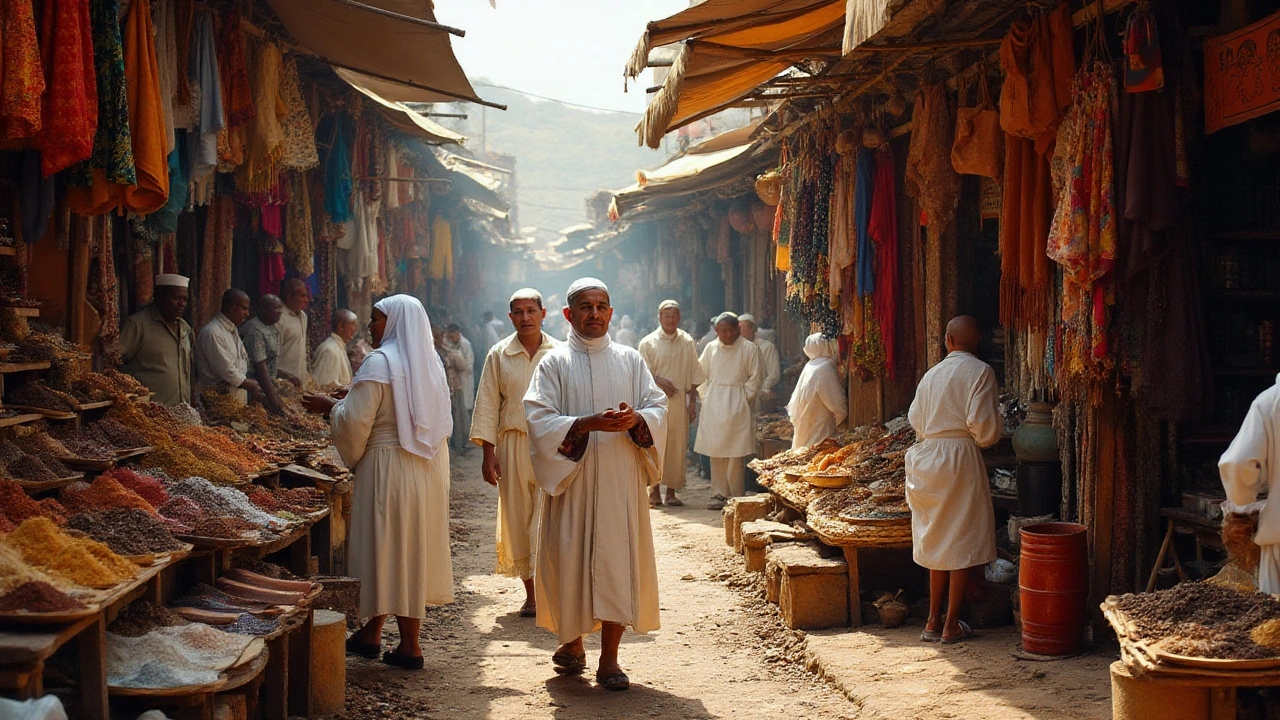
Natural Wonders
When it comes to natural beauty, Ethiopia is a treasure trove waiting to be explored. This country offers a plethora of stunning landscapes, unique wildlife, and geological marvels that captivate anyone who sets foot here. The diversity of its natural environment ranges from high alpine terrain to lush valleys and even arid deserts.
One of the most remarkable natural wonders of Ethiopia is the Simien Mountains National Park. Situated in the northern part of the country, this UNESCO World Heritage Site is often referred to as the 'Roof of Africa.' The park's jagged mountain peaks, deep valleys, and plunging cliffs offer some of the most breathtaking scenery in the world. Home to rare animals like the Ethiopian wolf and the Walia ibex, the park also provides shelter to the Gelada baboon, which is found only in Ethiopia.
The unique landscapes of the Simien Mountains are complemented by the Danakil Depression, one of the hottest and most alien landscapes on Earth. Located at the northern end of the Great Rift Valley, the Danakil Depression is known for its otherworldly beauty. This desert region features salt flats, hot springs, and active volcanoes, including Erta Ale, which boasts one of the world's few continuously active lava lakes. According to a report by the Geological Survey of Ethiopia, temperatures in this region can soar above 50 degrees Celsius.
"The Danakil Depression is unlike any other place on Earth. Its unique geological formations and extreme environment are a testament to our planet's volcanic activities." - Geological Survey of Ethiopia
Lake Tana offers another slice of Ethiopia's rich natural beauty. As the largest lake in Ethiopia and the primary source of the Blue Nile, Lake Tana is a haven for birdwatchers and nature enthusiasts. Its island monasteries, some of which date back to the 14th century, add a spiritual and historic dimension to its natural splendor. The Blue Nile Falls, locally known as Tis Issat or 'Smoking Water,' are located downstream of the lake and provide a majestic spectacle during the rainy season.
The country's biodiversity extends to the Bale Mountains National Park. This park is home to the Sanetti Plateau, which stands over 4,000 meters above sea level and is often covered in snow. The Bale Mountains are known for their flora and fauna, many of which are endemic to the region. Bird watchers can spot the rare blue-winged goose and other indigenous species, making it a paradise for ornithologists. The Harenna Forest, also within the park, is one of the few remaining tropical forests in Ethiopia and offers an entirely different ecosystem to explore.
Nothing encapsulates Ethiopia's stunning natural beauty quite like the Great Rift Valley, a geological wonder that extends over 6,000 kilometers from Lebanon to Mozambique. In Ethiopia, the valley is dotted with a series of lakes that provide essential habitats for various species and are vital resources for local communities. Lake Awasa, Lake Langano, and Lake Abijatta are among the most visited, each offering unique opportunities for recreation, wildlife spotting, and relaxation.
From the heights of the Simien Mountains to the depths of the Danakil Depression, Ethiopia's natural wonders are as diverse as they are breathtaking. It's little wonder that this land has become a beloved destination for adventurers, naturalists, and tourists alike. Exploring Ethiopia's landscapes offers a journey into some of the most unspoiled, awe-inspiring terrains on Earth.
Unique Cuisine
Ethiopian cuisine is a culinary delight that draws food enthusiasts from all corners of the globe. One of the most famous dishes is Injera, a large, soft, and slightly sour flatbread made from teff flour. Teff is a grain native to Ethiopia and loaded with nutrients, making it both delicious and wholesome. Injera serves as the base for most Ethiopian meals, pairing wonderfully with a variety of stews and curries.
The beauty of Ethiopian food lies in its communal nature. Meals are often shared on a large platter, encouraging diners to engage and bond over flavorful dishes. These platters usually feature a mix of vegetarian and non-vegetarian options, from spicy lentil stews known as Misir Wot to the intricate and aromatic chicken stew called Doro Wat. The latter is made with succulent pieces of chicken, simmered with a mix of onions, garlic, and a blend of spices, all harmonized with a generous helping of berbere, a quintessential Ethiopian spice mix.
"Ethiopian food is an experience that tantalizes all the senses. It's a vibrant mix of textures, colors, and flavors, all wrapped into one, enabling a truly immersive dining experience." - Marcus Samuelsson
Vegetarians and vegans find Ethiopian cuisine particularly appealing due to its diverse plant-based offerings. Dishes like Shiro, a creamy chickpea stew, and Atakilt Wat, a savory mix of cabbage, potatoes, and carrots, are bursting with flavor and nutrition. Ethiopian Orthodox Christians observe numerous fasting periods throughout the year, during which only vegan meals are consumed, further enriching the country's vegetable-based recipes.
Another essential element of Ethiopian dining is the coffee ceremony. Coffee, believed to have originated in Ethiopia, plays a central role in social and cultural life here. The ceremony involves roasting green coffee beans on an open flame, grinding them, and then brewing in a traditional pot called a jebena. This ritual is often accompanied by the burning of incense, creating an inviting and aromatic atmosphere.
Not to be missed are the various tibs dishes, which consist of sautéed meat, onions, and peppers. The method of preparation varies from region to region, but the result is always mouth-wateringly good. Often, you'll find tibs served on a sizzling hot plate, intensifying the flavors and making for an engaging, sensory experience.
For the sweet tooth, Dabo Kolo offers a delightful snack. These small, crunchy bites made from roasted barley and honey are incredibly addictive. Whether you're munching on them with a cup of coffee or just enjoying them as a standalone treat, they offer a pleasant ending to any meal.
In essence, Ethiopian cuisine is a rich tapestry of flavors, aromas, and textures, offering something for everyone. It's one of the many reasons why Ethiopia is so famous. Every dish tells a story of the country's diverse cultures and long-standing traditions, ensuring that each bite you take is not just food, but a piece of history.
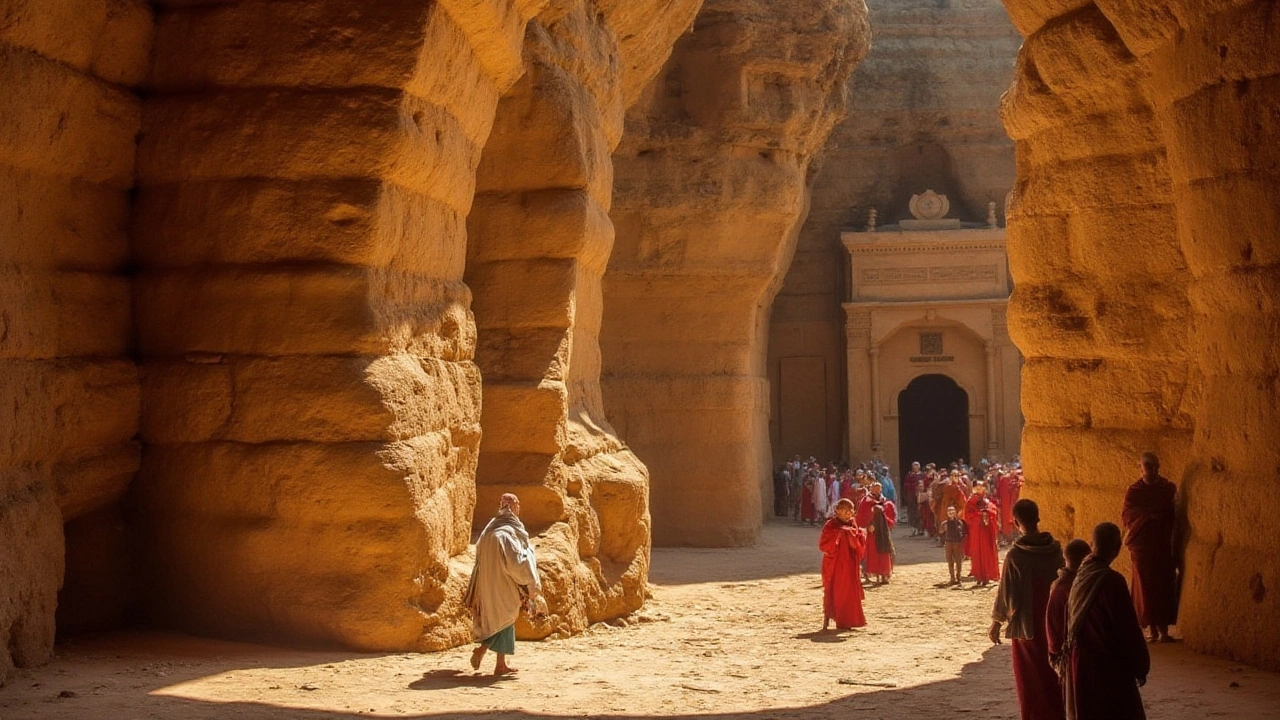
Modern Developments
In recent years, Ethiopia has seen significant modern developments that are reshaping its cities and infrastructure. One of the most noticeable changes is in Addis Ababa, the vibrant capital and largest city. Addis Ababa has become a sort of economic and cultural melting pot, reflecting broader national trends. The skyline is dotted with new skyscrapers, and the city hosts numerous international conferences and cultural events, making it a bustling hub of activity.
The Ethiopian government has heavily invested in infrastructure, focusing on improving transportation and connectivity. The Addis Ababa Light Rail Transit (AA-LRT), the first of its kind in sub-Saharan Africa, started its operations a few years ago and has greatly enhanced mobility within the city. Additionally, the construction of the Grand Ethiopian Renaissance Dam (GERD) aims to transform the country's electricity production, potentially making Ethiopia a key energy exporter in the region.
Economically, Ethiopia has been one of the fastest-growing economies in the world. The government’s Growth and Transformation Plan (GTP) has set ambitious targets for industrialization and development, attracting foreign investment and fostering the growth of manufacturing industries. Major international brands now operate factories in Ethiopia, providing jobs and boosting local economies. The development of the Hawassa Industrial Park is a testament to this rapid industrialization, as it is one of the largest specialized parks in Africa.
Education and healthcare have also seen substantial improvements. New schools and universities are being established, aiming to provide quality education to a broader segment of the population. Healthcare infrastructure is being developed, focusing on both primary care and specialized services. Efforts such as the Health Extension Program have decentralized healthcare services, bringing medical assistance to rural areas that previously lacked such facilities.
Technological advancements are also making waves in Ethiopia. The country is experiencing a digital boom, with more people gaining access to the internet and mobile services. This surge in connectivity is transforming businesses and everyday life, making it easier for entrepreneurs to reach new markets and for citizens to stay informed. The establishment of tech hubs and incubators in Addis Ababa is encouraging innovation and attracting a new generation of tech-savvy professionals.
Ethiopian Prime Minister Abiy Ahmed has stated, “Our goal is to build a country where prosperity and progress are accessible to all our citizens.” This vision is driving much of the development and transformation witnessed in recent years.
Socially, Ethiopia is evolving too. Modern art galleries, theatres, and music scenes are flourishing, adding layers of cultural richness to urban life. New public spaces and parks provide areas for recreation and community gatherings, contributing to a better quality of life for residents. These developments reflect a growing middle class that desires a cosmopolitan lifestyle while still staying rooted in traditional values.
Despite these advancements, Ethiopia faces challenges such as political instability and social conflicts. However, the resilience of the Ethiopian people and their commitment to progress continue to drive the nation forward. The blend of historical significance with modern growth makes Ethiopia a uniquely compelling place, capturing the essence of both its storied past and its dynamic present.
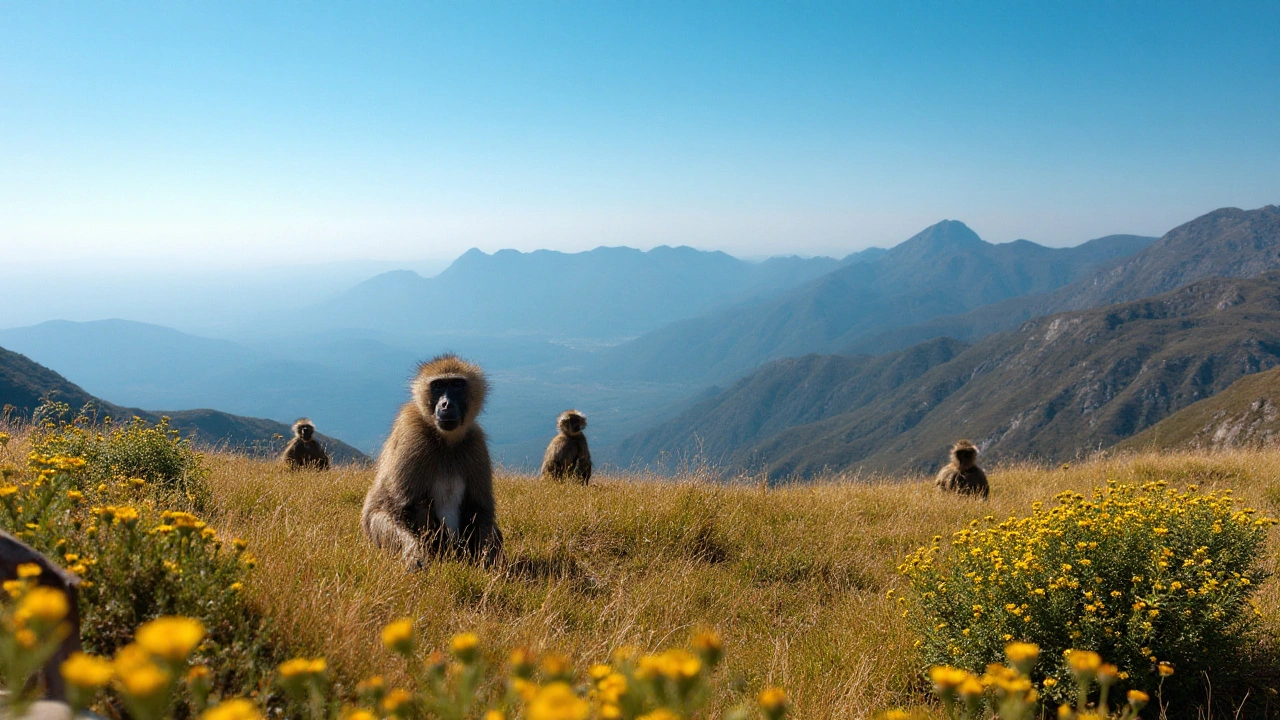
 Can US Citizens Work in Ethiopia? Understanding Salaries and Opportunities
Can US Citizens Work in Ethiopia? Understanding Salaries and Opportunities
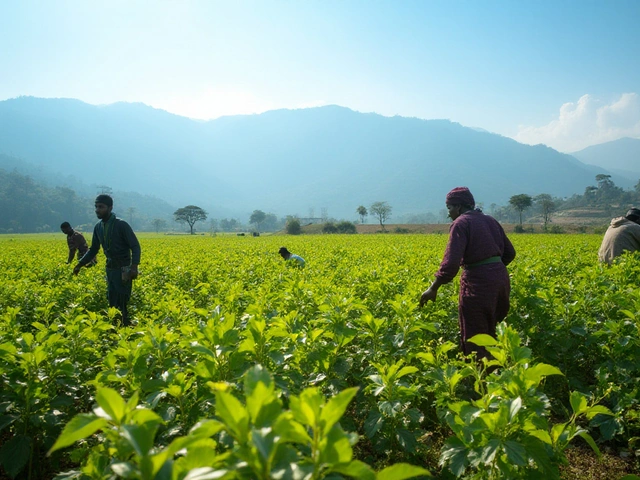 Most Common Jobs in Ethiopia Revealed
Most Common Jobs in Ethiopia Revealed
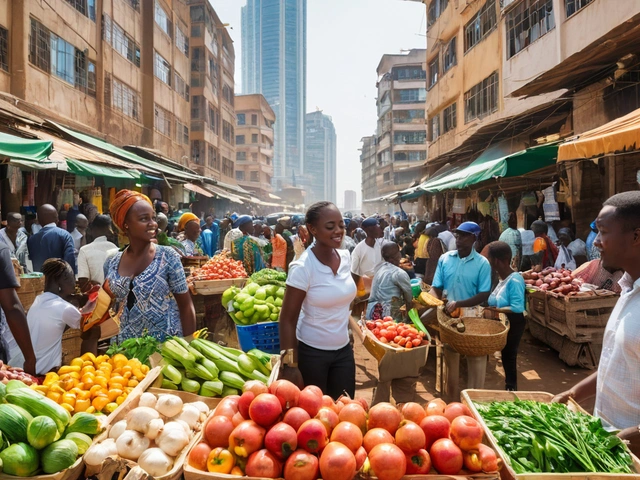 Business Sectors Thriving in Africa: Key Opportunities to Explore
Business Sectors Thriving in Africa: Key Opportunities to Explore
 Navigating Employment Opportunities for Foreigners in Ethiopia
Navigating Employment Opportunities for Foreigners in Ethiopia
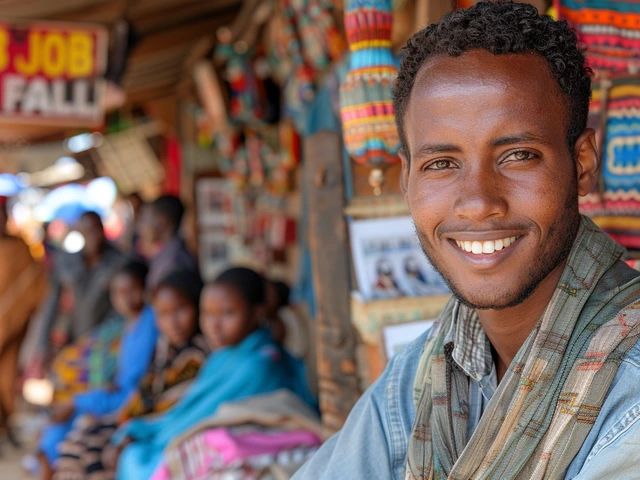 Ethiopia's Jobless Rate: Current Trends and Challenges in 2024
Ethiopia's Jobless Rate: Current Trends and Challenges in 2024
christine mae cotejo
September 3, 2024 AT 17:41Traveling to Ethiopia feels like stepping into a living museum where each sunrise paints the highlands with stories of ancient triumphs and modern dreams, and the air itself seems infused with the whispers of Lucy’s distant footsteps.
From the moment you touch down in Addis Ababa, the bustling capital greets you with a kaleidoscope of colors, scents, and sounds that echo the nation’s 80‑plus ethnic tapestries, each thread woven with its own rhythm and language.
The crown jewels of this journey are undeniably the rock‑hewn churches of Lalibela, where artisans sculpted sanctuaries from solid granite, creating a celestial city that has withstood centuries of change.
Not far away, the mysterious Ark of the Covenant beckons believers and skeptics alike, tucked within the walls of the Church of Our Lady Mary of Zion, a potent symbol of Ethiopia’s indomitable spiritual heritage.
History enthusiasts will also be enthralled by the battlefields of Adwa, where Ethiopian forces delivered a decisive blow to colonial ambitions, a victory that still fuels national pride.
Culture thrives in the rhythmic pulse of Timkat, the Epiphany celebration, where priests clad in ornate robes process through streets awash with fragrant incense and jubilant chants.
Meanwhile, the gastronomy of Ethiopia transforms every meal into a communal rite; the sourdough injera, the fiery doro wat, and the delicate kitfo each tell a story of the land and its people.
One cannot speak of Ethiopia without mentioning its breathtaking natural wonders, from the towering peaks of the Simien Mountains, home to the gelada baboon, to the otherworldly expanse of the Danakil Depression, where boiling sulfur springs paint the horizon in surreal tones.
Lake Tana’s serene waters cradle ancient monasteries that have guarded priceless manuscripts for centuries, linking the present to an uninterrupted line of faith and scholarship.
For the adventurous, trekking the Bale Mountains offers encounters with the rare Ethiopian wolf and the verdant Harenna Forest, a rare tropical gem in an otherwise rugged landscape.
In the realms of modern development, the Addis Ababa Light Rail whisks commuters across the city with a speed that mirrors Ethiopia’s rapid economic ascent, propelled by initiatives like the Grand Ethiopian Renaissance Dam.
The dam itself promises to transform the nation’s energy landscape, lighting up homes and factories while positioning Ethiopia as a future regional power exporter.
Education and technology are blooming as well, with new universities and tech hubs nurturing a generation of innovators eager to blend tradition with digital prowess.
Yet, despite these strides, challenges remain; political tensions and social divides test the resilience of a people who have historically turned adversity into opportunity.
In the end, Ethiopia offers a mosaic of experiences-historical depth, cultural vibrancy, natural grandeur, and modern ambition-that together craft an unforgettable odyssey for any traveler who dares to explore its bounds.
Douglas Gnesda
September 15, 2024 AT 13:33From a logistical standpoint, Ethiopia’s infrastructure upgrades-most notably the Addis Ababa Light Rail and the strategic expansion of the Grand Ethiopian Renaissance Dam-have dramatically increased both regional connectivity and energy security, thereby catalyzing tourism and foreign direct investment.
The integration of these projects with existing transport corridors facilitates smoother access to remote heritage sites like the rock‑hewn churches of Lalibela and the ecological hotspots of the Simien and Bale Mountains.
Moreover, the diversification of the hospitality sector, with boutique eco‑lodges and upscale urban hotels, reflects a market segmentation strategy that caters to both adventure seekers and high‑end cultural tourists.
Coupled with the government's Growth and Transformation Plan, these initiatives underscore a sustainable development model that balances preservation of Ethiopia’s unique cultural assets with its burgeoning economic aspirations.
Abhijit Pimpale
September 27, 2024 AT 03:20The Simien peaks offer unparalleled vistas.
Eric DE FONDAUMIERE
October 9, 2024 AT 07:00Yo, those rail lines are lit!
They literally zip you through the city faster than a taxi stuck in traffic and give you a chance to stare at the skyline while you’re cruising.
Plus, the new stations have cool art installations that make the whole commute feel like a mini‑gallery.
Big shout‑out to the planners for making public transit actually fun and useful for locals and visitors alike.
Pauline Herrin
October 21, 2024 AT 10:40While the enthusiasm for Ethiopia’s growth is commendable, it is essential to maintain a scholarly rigor when presenting its historical narratives.
The romanticized depiction of events such as the Battle of Adwa, though inspiring, should be contextualized within broader geopolitical dynamics to avoid mythologizing.
Furthermore, the emphasis on tourism must be balanced with sustainable practices to protect fragile ecosystems like the Danakil Depression.
In summary, a measured, evidence‑based approach will enhance both academic credibility and responsible promotion of this remarkable nation.